A TALE OF GREEK GODS, GREEK RUINS & A BOTSWANA KHUMAGADI
- mmalenaonyana
- Sep 22, 2017
- 11 min read
Location: Thessaloniki, Greece
When: 22 September 2017
Purpose: Discovery & Passion
Impression: W<3W
'The best purpose' is to live your best life, and to be the change you wish to see in the world, Right! Love-laugh-live! Clichés aside, I really believe it's this simple. These are the thoughts floating in my head as I sit on the promenade gazing at the Thermaic Gulf of the Aegean Sea, catching myself in an unintended meditative state.
“We are what we repeatedly do. Excellence, then, is not an act, but a habit, Aristotle.”
Did you know that Aristotle was born only 55km from Thessaloniki and that his name means 'the best purpose’? Purpose! Well, mine right now is to savour the Thessalonikian, Greek culture. And maybe, just maybe I can draw from it the same inspiration that influenced the great thinker.
However, I only have four days within which to do this and to soak up the sun and culture and I have every intention to spend one of these days on a beach. Unfortunately, Thessaloniki doesn't have a beach so I’ll have to take a drive to one, however the long stretching promenade of the ‘New Waterfront’ makes up for it! It really is put to good use by both locals and guests who go for long walks, jogs or runs and also by the many cyclists who leisurely or sportively flow to and fro on the designated bike lane. The prom is also littered with ball courts, children's playgrounds, dog parks and several monuments. My favourite of the monuments is the ‘Umbrellas’ sculpture by George Zongolopoulos; the first thing that came to me when I saw it was 'Mary Poppins'. It is beautiful, playful and unique. Day or night, its character radiates. This promenade is a great example of urban living done well.
“The whole is more than the sum of its parts, Aristotle.”
As I stand to leave, turning away from the Sea, my gaze falls on the many homes densely packed upon the hill. Through them, I spot the ancient eastern wall serpent- like ascending side by side with the modern homes until it reaches the fort that stands proud on top of the hill as testimony that all the books we've read about Ancient Rome, Ancient Greece, the Ottoman Empire and the Byzantine period are not just tales. No, HERE they are a living history in an open air museum!
A walk through the city reveals that it's rather small and that one can easily walk to many of the sights. Within the city rest many ruins of the town wall, a roman forum, churches and towers; of these sights I visited the Rotunda and the eastern wall tower. Entrance to the former is only 2€ and to the latter a total of approximately 1400kcal (well, that's what the sign says), so it's well worth it.
As I meander through the streets I realise that something has been causing the cog wheels in my brain to churn, "austerity, austerity, austerity!"
“It is the mark of an educated mind to be able to entertain a thought without accepting it, Aristotle. “
However, all I see are jolly people in a vibrant city and not the grim picture that had been painted by the many news articles I had read and the News TV Channels I had watched. In the couple of days that I walked through the city I had observed that the streets weren’t speckled with the homeless, hobos or beggars. ‘Maybe it’s because Thessaloniki is not the capital,’ I heard a voice in my head say, ‘yes, but it’s the second biggest city and it’s a port city at that’ said the same voice in my head in rebuttal. Alas, a socio-political debate was about to ensue in my head during a lovely vacation, imagine that. Wait! Stop, let’s rewind to…
Arrivals
The first thing I see when we fly in is the harbour, from the air it looks expansive and is bustling with activity even at this late hour of the evening. I glimpse at my watch as we land and it’s around 9pm, the sun is turning the horizon into hues of red and orange in its quest for slumber. From the airport as suggested I take the bus to my abode; this is going to be interesting cos the teleprompt display is in Greek and the announcements are also in Greek. Attentively I try my level best to listen out for my stop within the chitter chatter and over the rumbling engine. The heat in the bus keeps prodding at me and pinching me teasingly; a welcome assurance that European summers do exist. It is in this moment that I remember the saying ‘two heads are better than one’, cos this implies there’d be four ears listening out for the stop! I have an idea and it is to get someone to unconsciously assist me. Try it next time, it really works. You simply tell another passenger (who you believe to be a local, of course) that you are going to said stop and don’t know exactly where it is, also make sure to ask them to read out or pronounce the name of the stop properly cos you doubt your pronunciation. Once that’s done, the unknowing good Samaritan will keep their eyes and ears open and when your stop comes they and one or two other people who were eaves dropping in on your conversations will let you know that “this is your stop”. There’s a lot of good out there, it’s in the finer details, the small things that shine through- and traveling draws your attention to them. Voila! I jump out of the bus and glance at the instructions of how to reach my katoikia (abode) and from the stop I am to take a cab. So I gallantly hail one, hop in and draw out the best pronunciation of “40 Churches” (but in Greek of course; 40 εκκλησίες ) and drive off into the night.
“There is no great genius without some touch of madness, Aristotle.”
My casa is situated around Ano Poli in the upper town where much evidence of Roman, Byzantine and Ottoman history remains; it’s not too far from the ruins of the Roman Emperor Galerius’ 4th-century palace which includes the Rotunda which has been both church and mosque and The Arch of Galerius.
Rotunda of Galerius
The Rotunda is a Roman Temple and was built in the early 300s. Rotunda means circular and this is evident in its striking circular shape. It was built by Emperor Galerius’ to be his mausoleum but unfortunately that didn’t happen because he was buried in Serbia after what is believed to have been a puzzling death due to an unpleasant disease… *shoulder shrug*at this *conspiracy theory*. The structure was then later used as a church by Constantine the Great and later converted into a Mosque by the Ottomans, this being evident due to the slender minaret that towers over the Rotunda. Enter the Rotunda to witness the beautiful mosaic art work on the ceiling and the play of acoustics hidden in its floor. It took me a while to figure out what the fuss was about over the openings in the floor.
If you look to the south of the Rotunda (towards the sea), you will see The Arch of Galerius (dating from AD 303), built in celebration of the victory over the Persians. It has detailed carvings of soldiers on it. To my observation it is now the go to landmark for rendezvous ‘meet me at the Arch or the Kamara (local name for it)’. The Arch was originally part of the Galerius Complex and linked to the Rotunda to the north and the palace to the southwest. It must have been marvellous in it heydays!
“The aim of art is to represent not the outward appearance of things, but their inward significance, Aristotle.”
At the beginning of my tale I mentioned the promenade; however, I neglected to mention The White Tower of Thessaloniki/ Lefkos Pyrgos (formerly known as the Tower of Blood). It is 34m high and Thessaloniki's chief landmark. It is currently used as a museum which is a redeeming function in comparison to its dreadful history as a prison and torture chamber. Legend has it that the tower was painted white by a prisoner in 1890 in exchange for his liberty affording it its new name. However, my least favourite and second tale to how the tower acquired its new name is that it was simply renamed after the 1913 Greek reconquest. I recommend a visit of the museum which can be done with a free audio guide; if you have no issues with heights your reward lies at the top of the tower where you’ll have a great view of the cove.
All of this walking around and sightseeing has made me peckish so I decide to try the restaurants at the Modiano Market. The market is in the centre of the city; on my way to reach it I stumble upon the well renowned Aristotelous Square which was built after the great fire of 1917 and designed by French architect Ernest Hébrard in 1918. His choice of architectural style, Eclecticism, was genius for I believe with it he intended to draw Thessaloniki out of the ashes of its past with renewed modernity to rival the architecture of other European cities, by using a style that in its very nature embraces and incorporates the diverse elements of its history in creating something that is “new and original,” like the mythological Phoenix. The two buildings that show this style are the Electra Palace Hotel and Olympion cinema. Food, let’s eat!
From bustling and full to silent and empty, the market has taken on a monastic metamorphosis that seems to mirror my food induced comatose state. Therefore all roads lead to bed via The Ancient Roman Agora/Forum that I happened upon a few blocks from Aristotelous Square and the Market (moral of this sentence is to never use the same route home for many discoveries will go undiscovered). It is part of the Galerian Palace Complex and like all Roman forums it was the centre of public and political life. One can still see the great arches, cloisters, fountains and the amphitheatre. During its excavation coins, stone and marble sculptures were found which can be seen in the museum that is situated on site. Don’t just walk past, go in and live a glimpse of the ancient Roman life. Such wondrous treasure!
“The soul never thinks without a picture, Aristotle.”
It is said that the “best view comes after the hardest climb”; this and the fact that Monastery Vlatades (Vlatadon) is a UNESCO World Heritage Site are reason enough to get me climbing- and fortunately enough the climb wasn’t really that hard. This monastery had my attention from the day I arrived, it was a prominent feature of the view outside my window and it dominated both the view and my imagination, daily, momentarily stealing my attention from the sunset I had stepped out onto the balcony to observe. Its red-brown façade giving nothing away of its epoch or legacy, it just stood there staunchly as it had since the 14th century during the late Byzantine Empire. Behind it, but slightly to the right as if a co-conspirator, the serpent like city wall which remains pointing towards the tower beckoning me to come as it did that day my gaze fell on it as I stood on the promenade. I walk into the complex and around some accessible areas of the building that aren’t cordoned off with the hopes that I could peer through a window but alas, I wasn’t that fortunate so I move on to the top of the tower were I enjoy the view more and took a few pictures for memories’ sake. The monastery houses historic and religious relics and is said to have frescos of great religious and artistic significance.
The Tower of Trigonio as it is called is part of a defensive wall system that surrounded the city of Thessaloniki during the middle Ages. The walls map a great history of how it both changed and stayed the same during its different epochs of ruler ship. From the tower one can follow the line of the wall all the way to the Rotunda and further down to the prom. Today the view is magnificent and clear, allowing full sight of the mountain of gods, snow-capped OLYMPUS.
“In all things of nature there is something of the marvellous, Aristotle.”
Nea Poteidaia, Afytos & Kassandra –chalcidice Beach
It is day four today and my last full day here so off to the beach I go, destination Halkidiki; the peninsula with three fingers. Today I will walk the streets of Afytos, the capital of Kassandra, which is the first and most developed of the three fingers. I will discover beautiful corners, streets and uncover stories to share with my greatgrandchildren. LoL, jokes aside I expect nothing but paradise. It takes us just over an hour to reach the blue waters and white sands of Chalcidice beach, the white sands stretching as far as my sight will allow. The journey was shortened by the intriguing tale of how Halkidiki was forged from the battle that ensued between giants and Olympiad gods, the former losing to the mightier. I wonder if it was the fatal tumble of the giants that dented the earth forming the three fingers or if it was the strikes that fell upon the ground when blow after blow was exchanged. Whichever it was, I am selfishly grateful because something marvellous was gained from it.
The beach has few cafes and restaurants on it and even fewer tourists and revellers which, I must admit, pleases me, for overcrowded beaches are not fun. The white sands stretch as far as my eyes can see, side by side with the sea. I find a shaded spot, lay out my towel and soak up the sun before going in for a dip. The water is refreshing, not too cold nor too warm. I lazily float about aided by the salt in the sea, thoughtlessly gazing at the sky, sea gulls and the sun. How ironic- I wonder what Descartes would have to say about this cos I’m here floating about thoughtlessly and ‘I am’ just as much as when I’m thinking, wait, no I think ‘I am’ more when I’m feeling and just being than when I’m thinking. Oh well, philosophy aside, my attention is drawn to the beach by the sound of my rumbling tummy. I truly thought someone just started a motor boat from there, only to realise I was held by hunger. I swim back and head up the hill to get something to eat and to stroll around the town, but first, I have to select a café and restaurant that promises the best coffee and Greek cuisine.
I find both within 40 mins, my café and restaurant of choice are 'Eat 7' and 'Thea Thalassa.' The meal is exquisite and the portions generous. On asking for the bill I receive a complementary dessert that is to die for, it is scrumptious and free -and who doesn’t like free stuff- and there is a shot as well. Such hospitality I can return to yearly. Now let me tell you about Eat 7 for it is a gem. This place is a treasure cove! First things first, the owner is a beautiful and passionate soul and very informative. We chat about the business, which is in fact a wine restaurant and delicatessen that deals in local produce only; yippee for that. She shows me their collection from the most affordable to the premium collectables, and paints the regions from which they come in the most colourful and detailed manner that makes me want to visit each and every region. She is the best tour guide She then asks me if I want to see something very interesting and says “I know you’ll like it” (she is very attentive). She takes me down to the cellar and shows me an ancient well that was discovered during the renovations, like what?! Oh yes, a well in the cellar. She went into detail about the history of it all, to the rules and regulations of building in this area. I order a glass of wine (recommended by her) and we chat some more. I have made a friend.
We say our good byes and I head back to the beach to catch my ride back.
Let’s part with more 'Greek' words of wisdom,
“Art takes nature as its model, Aristotle.”
“Nature does nothing uselessly, Aristotle.”
“Happiness is the settling of the soul into its most appropriate spot, Aristotle.”
Ruri go tsamaya ke go bona!











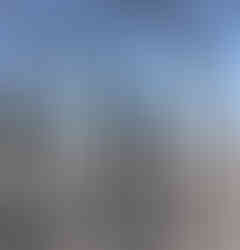







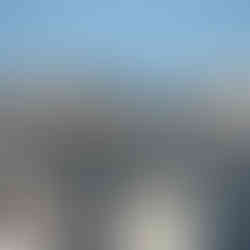








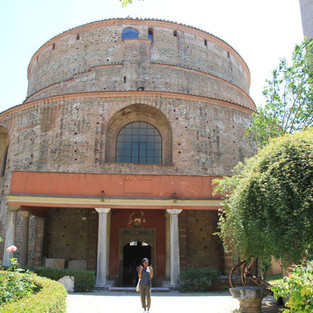









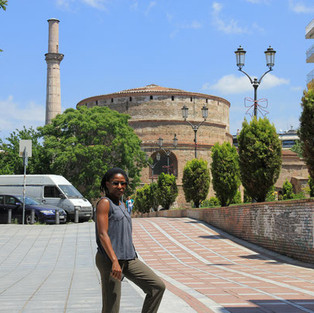









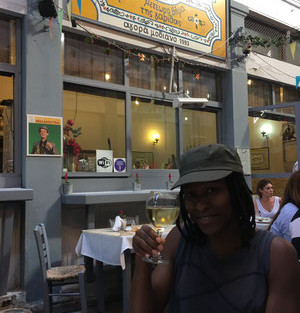



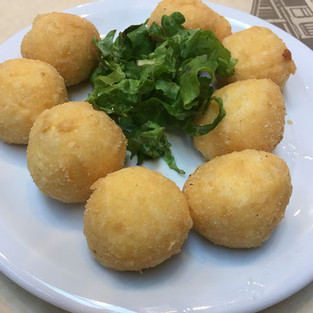








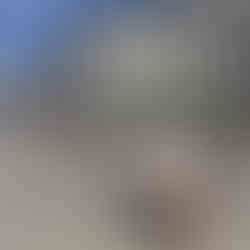
























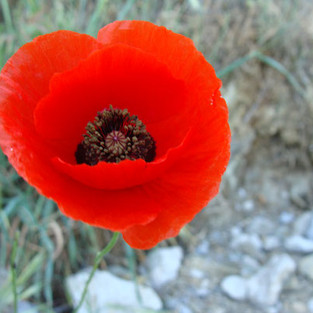















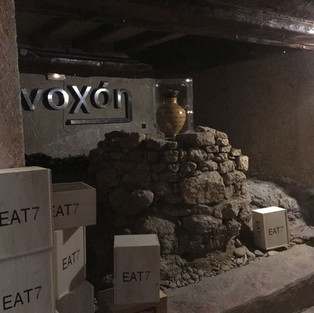



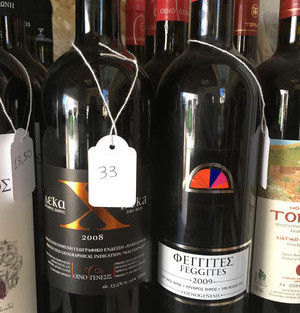

























Comments